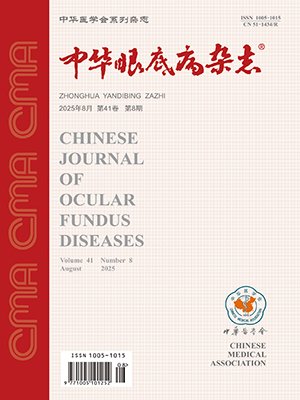Objective To observe the electrophysiological and morphological features of retinal ganglion cells (RGCs) in rats, and investigate its effect on the visual signal conduction. Methods Whole cell recordings were obtained from 112 RGCs of 30 rats at the age of 7-30 days. Resting membrane potential (RMP) was recorded, and input impedance was noted after given 2 mV hyperpolarizing current by voltage clamp. The action potential (AP) was induced by deplorizing current at different densities. The histological staining was actualized by injecting with biotin into the RGCs, and the diameter of the cells was measured. Results Three different discharge patterns of RGCs in response to maintained depolarizing currents were recorded: single spike (25 RGCs), transient firing (40 RGCs), and sustained firing (47 RGCs).The dia meter was 14-16μm in 57.14% transient firing RGCs, and 10-12 μm in 62.50% sustained firing RGCs. The maximum frequency of AP of sustained firing RGCs was significantly higher than that of transient firing RGCs (P<0.05). Conclusion The single firing of RGCs was an immature electrophysiological feature. The electrophysiological features of transient firing and sustained firing RGCs may be important to make the visual information code in spatial and temporal pathway. The electrophysiological and morphological features of RGCs in rats may be correlated with each other. (Chin J Ocul Fundus Dis,2004,20:160-164)
Citation: WANG Zonghua,YIN Zhengqin,WANG Shijun. Electrophysiological and morphological features of retinal ganglion cells in rats. Chinese Journal of Ocular Fundus Diseases, 2004, 20(3): 160-164. doi: Copy
Copyright © the editorial department of Chinese Journal of Ocular Fundus Diseases of West China Medical Publisher. All rights reserved




